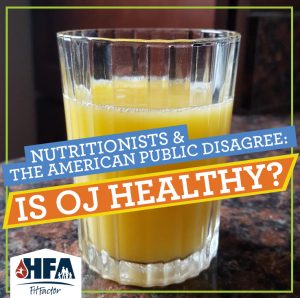Do you feel that your views of what’s healthy align with the views of the experts? The New York Times published an interesting article a few months ago about public perception of what is “healthy” and how these have changed over time. The study also highlighted what foods nutritionists believe to be the healthiest (and the least) and how these views differ from the general public. Tofu and quinoa are two foods that nutritionists deem healthy while the public is more uncertain about their nutritional value. On the flip side, 70% of ordinary Americans consider granola bars to be healthy while only 28% of nutritional experts felt the same. There are, of course, foods that everyone knows are terrible for you like bacon, soda, French fries and cookies. Apples, oranges and oatmeal are at the top of the list of foods that are thought to be healthy by most everyone.
This New York Times article shows what foods are considered healthiest by nutritionists and which ones are thought to be healthy by the general public, and where they overlap. Fifty-two common foods were rated in this survey.
It is likely that the reason behind the foods with conflicting perceptions between experts and the public is due to added sugar. Nutritionists know that in certain foods like granola bars and frozen yogurt, there is significant amounts of extra sugar added to them, making them less healthy than most people believe. Soon, it will be easier for the average consumer to learn this information on their own. The Food and Drug Administration announced a new template for nutrition facts labels which will require manufacturers to list how much sugar is natural and how much is added. These new changes will be effective July, 2018.
One reason that foods like tofu, quinoa and hummus are highest on the healthfulness scale for nutritionists but lower by the public is that they are relatively new to the mainstream American diet and therefore consumers may feel uncertain if they are really healthy or just a trend. It could also be that there are conflicting media messaging about certain foods. Experts are better informed about current research while the average shopper is more inclined to believe health claims by food marketers.
So, how do we as average consumers know what foods to buy without becoming an expert? Realistically, we don’t always have complete control over what we eat, but we can alter our lifestyles so that we know more about what we are putting into our bodies. Be discerning about the claims you hear from food marketers because at the end of the day, they are just trying to get you to buy something. Aaron Carroll of the New York Times published a list of common-sense rules for eating healthy which if followed, has the potential to improve your health significantly. (3) Some of his advice includes: eat as much unprocessed food as possible from a variety of sources, eat home cooked meals often, drink mostly water (and other beverages in moderation) and eat as many of your meals as you can with other people. While these rules may require lifestyle changes, they are indeed simple and can yield very positive results in regards to your nutrition, weight and overall health.



